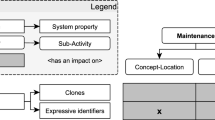Abstract
Defects are introduced into a software product during every phase of software development. A major source of defects that is often overlooked is requirements generation. Requirement errors discovered in later phases of the software development process are the most costly to correct because all phases of software development are usually impacted. Requirement defects can be categorized into two main types: 1) specification generation errors; and 2) unwanted/unnecessary/incorrect user functionality. This experience report presents the results of incorporating a two‐step methodology which combines Operational Demonstrations of the user interface and Requirement Inspections on software requirement specifications. The two‐step methodology addresses and corrects both types of requirement defects. Results from this experience support the premise that cost reduction and quality improvement can be obtained using a combined Operational Demonstration and Requirement Inspection development methodology for software requirements.
Similar content being viewed by others
References
Beohm, B. (1987), “Industrial software metrics top-10 list,” IEEE Software 3,9, 84–85.
Bisant, B. and J. Lyle (1989), “A Two-Person Inspection Method to Improve Programming Productivity,” IEEE Transactions on Software Engineering 15,10, 1294–1304.
Davis, A. (1992), “Operational Prototyping: A New Development Approach,” IEEE Software 9,5, 70–78.
Fagan, M. (1976), “Design and Code Inspections to Reduce Errors in Program Development,” IBM Systems Journal 15,3, 182–211.
Fagan, M. (1986), “Advances in Software Inspections,” IEEE Transactions on Software Engineering SE-12,7, 744–751.
Hekmatpour, S. (1987), “Experience with evolutionary prototyping in a large software system,” ACM SIGSOFT Software Engineering Notes 12, 38–41.
Kolkhorst, B. and A. Macina (1988), “Developing Error-Free Software,” IEEE AES Magazine, 25–31.
Martin, J. and W. Tsai (1990), “N-Fold Inspection: A Requirements Analysis Technique,” Communications of the ACM 33,2, 225–232.
Pleeger, S. (1992), “Measuring software reliability,” IEEE Spectrum, 56–60.
Royce, W. (1987), “Managing the development of large software systems: concepts and techniques,” In Proc. 9th Conf. Software Engineering, pp. 328–338.
Russell, G. (1991), “Experience with Inspection in Ultralarge-Scale Developments,” IEEE Software 8,1, 25–31.
Author information
Authors and Affiliations
Rights and permissions
About this article
Cite this article
Kosman, R.J. A two‐step methodology to reduce requirement defects. Annals of Software Engineering 3, 477–494 (1997). https://doi.org/10.1023/A:1018925618802
Issue Date:
DOI: https://doi.org/10.1023/A:1018925618802




